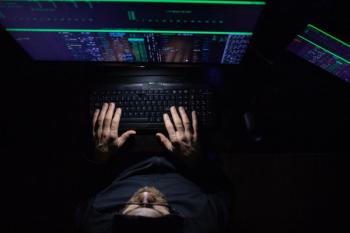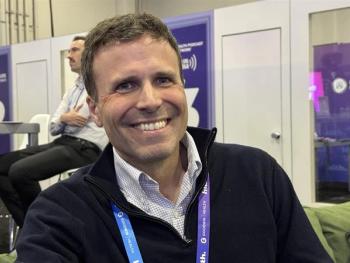
An Essential Worker During COVID-19 Wasn’t Even Human
Here are six ways that AI has played a critical role in conquering the pandemic.
According to the
Alongside the heroic humans who have been stepping up to the plate regardless of their occupation, artificial intelligence (AI) has joined the front lines. It is assisting humans in their work and making the insurmountable challenge of finding a vaccine, diagnosing COVID-19, helping people get vaccinated, helping insurance claims get paid or assuaging public concerns a reality.
It’s no wonder that AI spending in the healthcare and pharmaceutical industries is expected to increase from $463 million in 2019 to more than $2 billion over the next five years,
Consider the following examples of how AI, in all its forms, has battled the pandemic.
Vaccine delivery. From Moderna, Pfizer and Johnson & Johnson to countless other vaccines still in development, the speed at which highly effective treatments have been developed is unprecedented. A process that would normally take 10 years was reduced to months. Collaboration between government and industry and accelerated approval timelines have much to do with it, but AI also played a critical role. Since science is grounded in data, deep learning
Innovative diagnostics. Thankfully, many people are becoming vaccinated, but COVID-19 remains a major health threat. AI is helping researchers develop ever more accurate, convenient and faster testing so that infected people can be treated and isolated as soon as possible. Machine learning and computational modeling are allowing researchers to study the ways different techniques and materials can improve the accuracy and response time of screening procedures. At
Public health management. As of mid-March,
AI is also helping to fairly distribute vaccines. Last winter in Minnesota,
Claims processing. As hospitals work to treat sick patients first and foremost, the financial toll of COVID-19 is just beginning to be realized on hospitals, health systems and payers. In fact, the AHA estimates a total four month financial impact of $202.6 billion in losses for America’s hospitals and health systems. The mounting costs, claims and settlements are creating a backlog of administrative processing, yet new AI-driven document processing solutions are handling many cases so that humans can focus on the anomalies and address more strategic issues. AI is enabling faster and more accurate processing of customer data, while also helping to identify and address fraudulent claims more easily.
Addressing public concern. With strict no-visitor policies in place, hospitals are not only trying to take care of sick patients, but to also answer incoming calls about symptoms or patient updates. Chatbots are helping to answer questions, direct callers more quickly and easily than would be possible with human staff alone.
For example, Providence Saint Joseph Health turned to technology to help it more effectively manage three critical stages of care: triage, testing and treatment, relying on chatbots to assist during the triage phase. By visiting its
Finding evidence in the images. While computer vision has made its way into the medical diagnostics field, helping to detect anomalies in x-rays and other mediums, it’s being put to use in new ways. Advanced computer vision algorithms are helping to detect COVID-19 in airports, train stations and other public areas. AI-driven computer vision models are monitoring travelers to identify any suspicious breathing patterns or fever, using infrared cameras. The data is the uploaded to a server where the AI algorithm processes the data.
Another interesting way computer vision is being applied is by monitoring movement and traffic using video data. In this way, computer vision is able to read images of people in busy areas and identify locations that may not be practicing safe social distancing or mask wearing, and areas that may need better urban planning.
From deep learning models, to chatbots and computer vision, AI has become a silent partner to essential, front-line workers during COVID-19. While it has been under the very worst of circumstances, it has proven its value in supplementing the brilliant work of humans, and will continue to gain traction in telehealth, discovery and diagnostics well into the future.
Author Information
Carlos Meléndez is the chief operating officer and co-founder of the artificial intelligence and software engineering services firm,






































